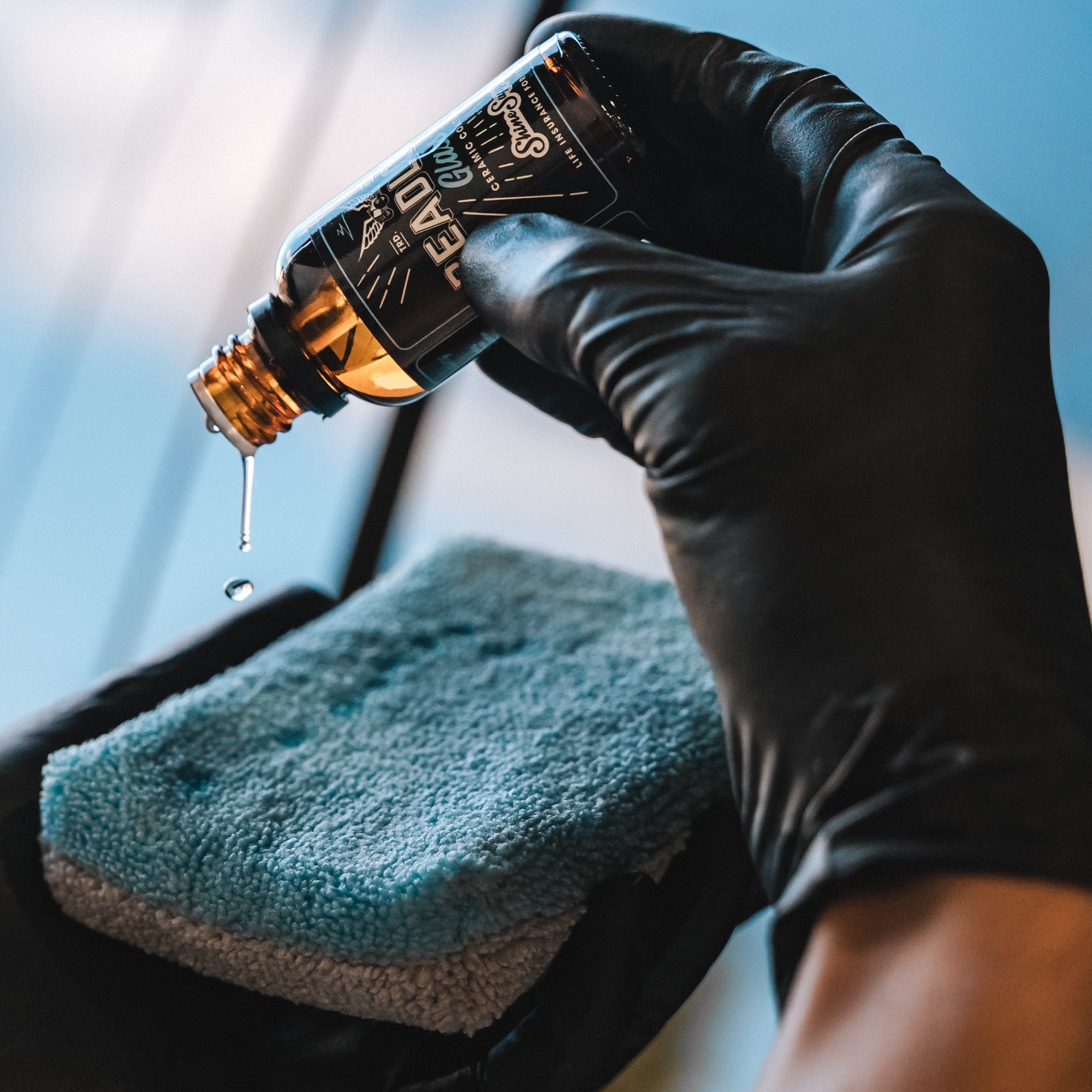Exploring the Science Behind Ceramic Covering and Its Influence On Automobile Explaining
The application of ceramic finishing in cars and truck describing stands for a substantial innovation in auto treatment, rooted in its advanced chemical properties, mainly silica dioxide and titanium dioxide. Comprehending the scientific research behind these products exposes not just the safety benefits they supply yet additionally their function in improving a car's aesthetic longevity. As we explore the details of the application procedure and the long-lasting ramifications for lorry upkeep, it comes to be clear that the choice of ceramic coating can basically change one's approach to vehicle care. What factors to consider should be made before devoting to this transformative solution?
What Is Ceramic Finish?
Ceramic layer is a modern option that has actually acquired appeal in the automobile detailing market for its ability to offer resilient security for automobile surface areas. This advanced protective layer is commonly made up of silica dioxide (SiO2), which forms a strong bond with the lorry's paint, producing a sturdy guard versus environmental contaminants. Unlike traditional wax or sealants, ceramic coverings provide premium resistance to UV rays, chemical stains, and physical abrasions.
The application of ceramic layer entails a meticulous process, where the vehicle's surface is extensively cleaned up and decontaminated prior to the covering is applied (Ceramic Coating). Once cured, the finishing improves the lorry's gloss, depth, and quality, giving a showroom-quality coating that lasts for several years. Among the essential benefits of ceramic finishing is its hydrophobic residential or commercial properties, which push back water and dirt, making upkeep much easier and decreasing the frequency of cleans
The Chemistry of Ceramic Layer
A fundamental facet of ceramic layer exists in its chemical structure, largely identified by the existence of silica dioxide (SiO2) This compound is indispensable to the formation of a sturdy, safety layer that bonds chemically to the vehicle's surface.
In enhancement to SiO2, many ceramic coatings integrate titanium dioxide (TiO2) and other additives to boost their performance characteristics. TiO2, for circumstances, adds to enhanced firmness and chemical resistance. The communication in between these substances develops a special molecular framework that offers a high degree of protection against environmental variables such as UV rays, acid rainfall, and oxidation.
In addition, the application process typically entails a meticulous preparation of the surface area to ensure optimum adhesion of the finishing. This chemistry not just ensures a durable surface however also enhances the visual charm of the vehicle. Comprehending the complex chemistry behind ceramic coatings is crucial for detailing professionals that aim to provide superior security and long life for their customers' lorries.
Advantages of Ceramic Finishing
While describing professionals frequently highlight the benefits of ceramic finishings, their benefits expand far beyond visual appeals. The main benefit transcends defense against environmental impurities. Ceramic coatings develop a hydrophobic surface that repels water, gunk, and dirt, considerably reducing the regularity of cleans and the effort required to keep an automobile's look. This safety layer also shields the paint from unsafe ultraviolet rays, stopping oxidation and fading over time.
Furthermore, ceramic finishes boost the long life of the vehicle's coating. Unlike standard waxes or sealants, which may last a few months, ceramic finishes can withstand for years, giving a lasting option for car treatment. This toughness translates to set you back savings, as owners are much less likely to need constant reapplication.
In addition, ceramic layers are resistant to chemical spots and etching, which can occur from acidic compounds like bird droppings or tree sap. This resistance not only protects the car's visual appeals but likewise lessens potential damage check this - Ceramic Coating. Overall, the investment in ceramic finish supplies car proprietors a considerable return in regards to protection, convenience of upkeep, and long-lasting aesthetic allure, making it an increasingly prominent choice in the world of auto describing
Application Refine Discussed

Once the surface area Website is properly prepared, the ceramic finish can be applied. Using an applicator pad, the service technician uses the finish in tiny sections, functioning in a crosshatch pattern to ensure even insurance coverage.
As soon as treated, the ceramic finishing creates a solid bond with the paint, offering boosted protection and a shiny coating. Appropriate application is vital to optimize the durability and effectiveness of the ceramic coating.

Lasting Impact on Lorry Treatment
The lasting impact of ceramic coating on car treatment is significant, as it fundamentally changes just how owners preserve their vehicles. By creating a sturdy, hydrophobic layer on the vehicle's surface, ceramic coverings decrease the adherence of dust, crud, and contaminants. This property minimizes the regularity of washing needed, eventually saving water and cleaning products.
Furthermore, the UV protection supplied by ceramic coverings helps to avoid oxidation and fading of the lorry's paint, maintaining its aesthetic allure and resale value with time - Ceramic Coating. This safety barrier also decreases the chance of scratches and swirl marks, which are usual issues in conventional paint coatings
Additionally, ceramic coverings promote much easier upkeep, permitting owners to cleanse their lorries with marginal effort. The smooth surface area makes it challenging for pollutants to bond, enabling less complex elimination during regular cleaning.
In the future, the investment in ceramic finish might cause cost financial savings in vehicle care product or services. On the whole, the enduring benefits of ceramic layers not only boost the look of automobiles yet likewise add to a more reliable and lasting strategy to automobile upkeep.
Verdict
In final thought, the application of ceramic finish represents a considerable development in cars and truck outlining, driven by have a peek at these guys its distinct chemical make-up of silica dioxide and titanium dioxide. This modern technology not only enhances the aesthetic appeal of vehicles however also provides robust protection versus environmental dangers and put on. The long-term benefits, consisting of reduced upkeep frequency and improved resilience, emphasize the value of ceramic coverings as an essential financial investment for keeping car look and honesty with time.
